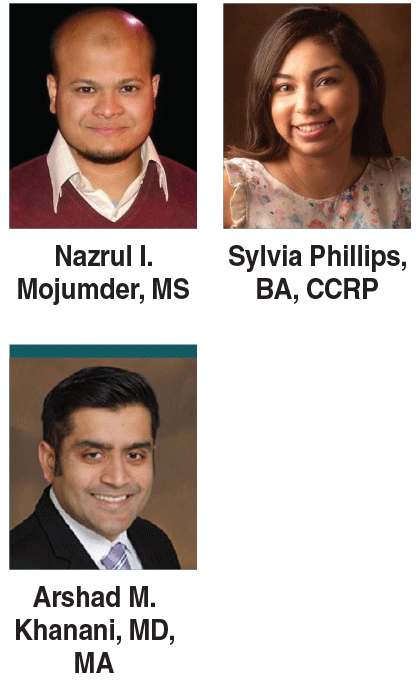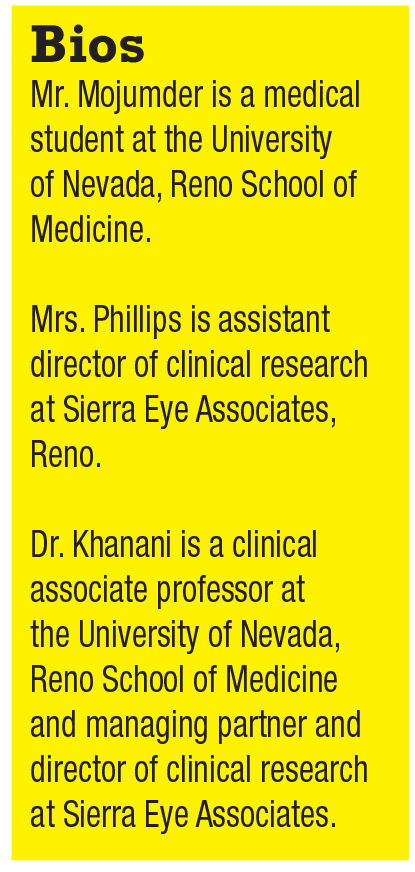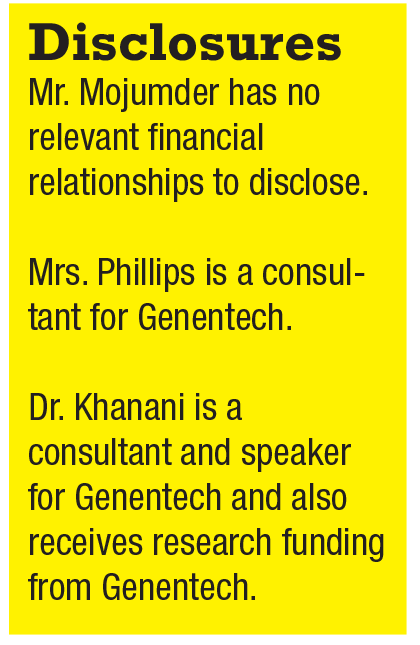
  |
Anti-VEGF agents have revolutionized our treatment for patients with neovascular age-related macular degeneration, but they come with a high treatment burden due to frequent clinic visits as well as injections. In the real world, this burden on patients and family members results in missed clinical visits. Therefore, visual acuity gains seen in the clinical trials aren’t maintained in clinical practice due to less than optimal dosing, and there is a direct correlation with number of injections and visual acuity gains.1,2
The treatment burden associated with
anti-VEGF injection therapy and the ensuing suboptimal outcomes create an unmet need for more durable and lasting treatments. Considering the promising results of the Phase II Ladder trial, the Port Delivery System with ranibizumab (PDS, Genentech) holds great potential to address this unmet need.
PDS is an innovative, investigational drug-
delivery system that includes a surgically placed implant for continuous delivery of a customized formulation of ranibizumab into the vitreous (Figure 1).3,4 The PDS implant is surgically inserted at the pars plana in the operating room. The implant is refilled during a minimally invasive in-office refill-exchange procedure using the specially designed PDS refill needle (Figure 2).3,4
The release of drug from the PDS into the vitreous follows first-order kinetics. The rate of release is proportional to the concentration of the drug in the PDS.
Lessons from Ladder trial
The Phase II Ladder (Long Acting Delivery of Ranibizumab) trial was designed to evaluate the treatment effect, durability and safety of the PDS. The primary analysis population consisted of 220 patients randomized to four different arms.5,6 The three PDS groups received different concentrations of ranibizumab (10 mg/mL, 40 mg/mL, 100 mg/mL), and the fourth group received monthly intravitreal injections of 0.5 mg ranibizumab.4-6 The primary endpoint of the study was time to the first PDS refill.
Refill criteria were prespecified by the study protocol and were based on clinical features of disease activity. The key secondary endpoints were change from baseline in best corrected visual acuity, change from baseline in central foveal thickness (CFT) and safety of the PDS versus monthly ranibizumab injections.
 |
In the initial months of study enrollment, a high rate of intraoperative and immediate postoperative vitreous hemorrhage was observed. The study was paused to find a way to mitigate this, then was resumed with a modified surgical procedure that included laser ablation of the pars plana before the implant was inserted. This modification resolved the issue of vitreous hemorrhage and the trial went on to successful completion.5,6
 |
Treatment burden reduced
The Ladder results were promising, showing that 80 percent of patients in the PDS 100-mg/mL arm went at least six months without requiring a refill.5,6 The median time to first refill in this group was 15 months.5,6
Looking at visual acuity, PDS improved or maintained vision, as the adjusted vision outcomes at nine months were similar between PDS 100 mg/mL and monthly 0.5 mg ranibizumab injections.5,6 The anatomic outcomes based on CFT were also similar between both groups.
As far as ocular and systemic safety of the PDS, the optimized implant insertion and refill procedures were well-tolerated. The Ladder study patients are being followed long term to look at efficacy and safety in the extension Portal study.7
Next: Archway study
Based on the positive Phase II Ladder data, the Archway study was designed. Archway is a Phase III, randomized, multicenter, active-comparator study designed to assess the efficacy, safety and pharmacokinetics of 100 mg/mL ranibizumab delivered via PDS with a fixed refill at week 24 compared with monthly ranibizu-
mab treatment.8
The study started in September 2018 and will enroll 360 patients. A surgical training plan, including virtual reality simulation, has been implemented for the ongoing Archway trial to ensure procedural consistency and prioritize patient safety. This virtual reality system simulates the PDS procedure and helps surgeons gain hands-on simulated experience before their first surgery and implant refill procedures in the study.
 |
Bottom line
Based on the data from the Ladder study, the PDS technology has the potential to improve real-world outcomes in our patients with neovascular AMD by addressing the unmet need of continuous delivery of anti-VEGF as well as decreasing treatment burden. The data from the Phase III Archway study will be crucial to confirm the efficacy and safety of PDS. RS
REFERENCES
1. Rosenfeld PJ, Brown DM, Heier JS, et al. Ranibizumab for neovascular age-related macular degeneration. N Engl J Med. 2006;355:1419-1431.
2. Holz FG, Tadayoni R, Beatty S, et al. Key drivers of visual acuity gains in neovascular age-related macular degeneration in real life: findings from the AURA study. Br J Ophthalmol. 2016;100:1623-1628.
3. Krader CG, Regillo C. Decreasing burden of nAMD therapy. Ophthalmology Times. 2019;44 (1):27.
4. Press release: Genentech unveils positive Phase II results for the Port Delivery System with ranibizumab (PDS), the first-ever eye implant to achieve sustained delivery of a biologic medicine to treat people with wet age-related macular degeneration (AMD). July 2018. https://www.gene.com/media/press-releases/14739/2018-07-25/genentech-unveils-positive-phase-ii-resu.
5. Pieramici D. Port Delivery System with ranibizumab (PDS): from dose ranging in Ladder phase 2 to ARCHWAY phase 3 study design. Presented at the 2018 American Academy of Ophthalmology Annual Meeting; Chicago, IL; October 27, 2018.
6. Regillo C. Sustained release ranibizumab therapy: PDS Phase 2 Ladder study. Presented at: Bascom Palmer Eye Institute Angiogenesis, Exudation, and Degeneration 2019 Meeting; Miami, FL; February 9, 2019.
7. Extension study for the Port Delivery System with ranibizumab (Portal). https://clinicaltrials.gov/ct2/show/NCT03683251. Accessed March 23, 2019.
8. A Phase III study to evaluate the Port Delivery System implant with ranibizumab compared with monthly ranibizumab injections in participants with wet age-related macular degeneration (Archway). https://clinicaltrials.gov/ct2/show/NCT03677934. Accessed March 23, 2019.



